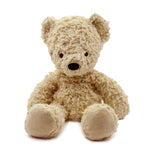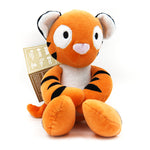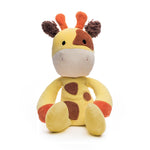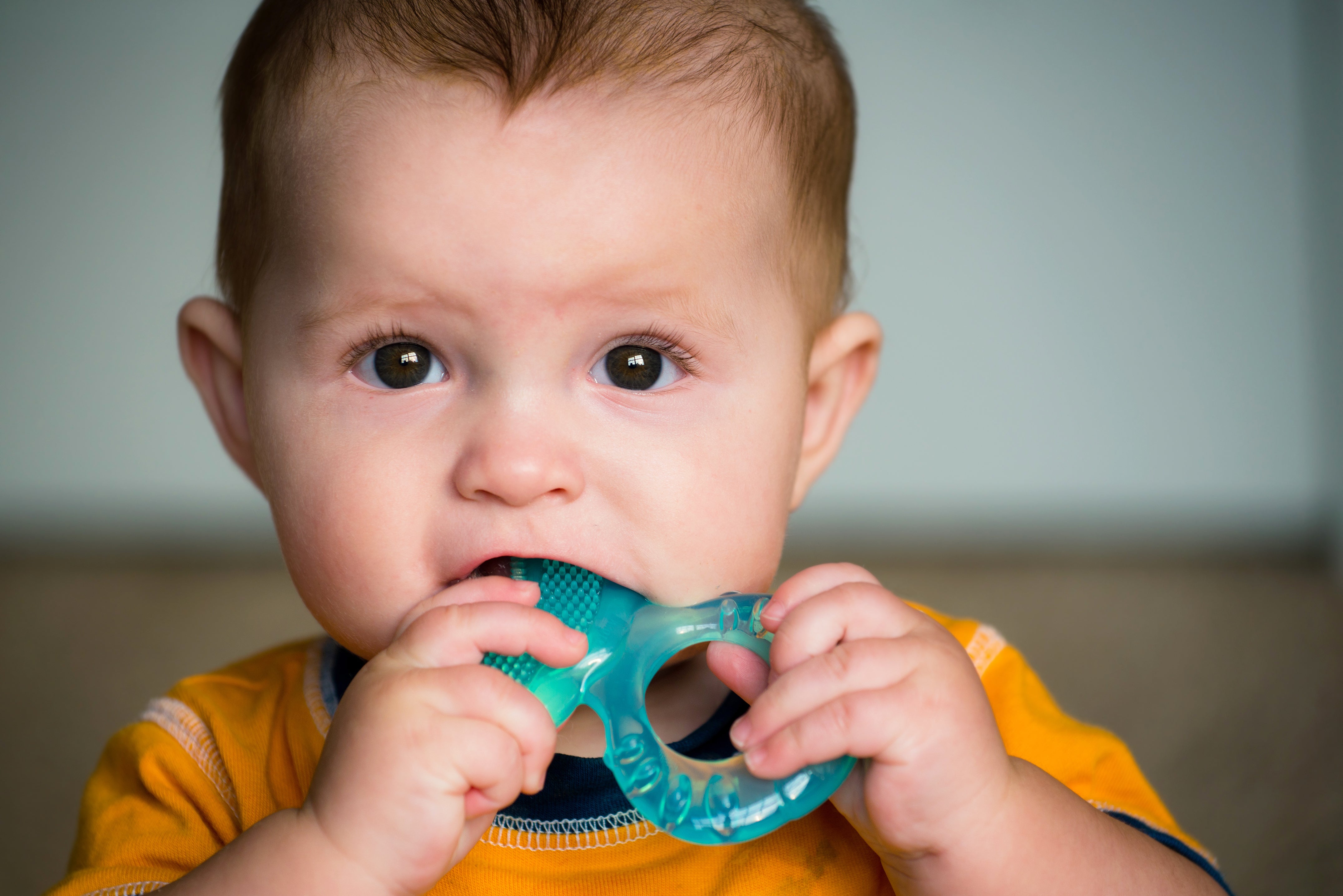Have you considered what harmful chemicals may be in your kid’s toys? Children, especially babies and toddlers, put almost anything in their mouths—it’s one of the ways they learn. Unfortunately, it’s also one of the ways they could potentially ingest harmful chemicals such as lead, phthalates, and fire-retardant chemicals. Children can also be exposed to toxic chemicals in toys by inhaling gasses released by their toys degrade over time.
Science shows that children are more susceptible than adults to toxic chemicals because children have a higher metabolic rate, have growing organs and tissues, and have a smaller body mass than adults. Exposure to chemicals such as these have been shown to lead to a host of developmental and health issues.
Chemicals are rife in children’s toys and so many other products. You’re probably wondering, What can I do to protect my kids from this scary stuff? One of the best ways to protect your child from toxic chemicals in toys is to buy organic toys. Organic toys and clothes are free from harmful substances and are often made in a more sustainable way that is safer for the planet as well.
The Dangers Hiding in Popular Children’s Toys
A recent study published in Environment International Science Journal found that 25% of children’s toys have harmful chemicals in them. They found that soft plastic toys are the most likely to contain harmful additives. Painted toys also pose a risk as they may contain traces of lead.
The Chemical Culprits:

PVC Vinyl/Phthalates - Phthalates are a group of chemicals that act as binding agents and are used to make plastics soft and flexible. Rub
ber ducks, plastic figurines, and teething rings are all most likely made with PVC plastic that contains phthalates. Children could be exposed to phthalates by putting plastic toys in their mouths, eating with plastic utensils, or eating off plastic bowls or plates. If the plastic is heated, the risk of toxins leaching out of the plastic is higher. Exposure to phthalates have been connected to asthma, attention-deficit hyperactivity disorder, type II diabetes, low IQ, neurodevelopmental issues, behavioral issues, autism spectrum disorders, and a host of other disorders.
While the toy industry maintains that the plastic used to make children’s toys is completely safe, a plethora of studies have many consumers and governing bodies concerned . In fact, worries over the effects of phthalates have led 12 countries, the EU, and the state of California to ban or restrict the use of phthalates in children’s toys.
Lead - Any amount of lead is considered toxic to humans, and lead present in children has been linked to lowered IQ and diminished ability to pay attention. Lead paint is banned in the United State, however in many countries where toys are made, mainly China, lead-based paint is still used for toys because it is durable and resilient.
Although lead-paint has been banned in the United States, it can still show up in imported toys. In 2016, high amounts of lead were found in the popular toys fidget spinners. Lead can still be used in plastics to make them more bendable. The CDC advises that some play jewelry has lead in it, and ‘chewing, sucking on or swallowing toy jewelry that contains lead will expose your child to lead.’
Fire Retardants - In the 1970’s, before residential fire alarms were required by law, lawmakers decided that children’s sleepwear needed to be flame resistant. Manufacturers achieved this by using Chlorinated and Brominated Flame Retardants like Tris (TDCPP and TCEP) on clothing. In 1977, Tris was banned from children’s sleepwear as it was shown to be absorbed into skin, affect DNA, and cause cancer.
However, Tris is still allowed in children’s toys, despite its known toxic effects. In addition to Tris, a host of other chemical flame retardants can be found in children’s toys that are made in China, according to this study published in Environmental Science and Technology. This includes Penta & Octa and Polybrominated biphenyls, all of which are no longer manufactured in the United States due to health concerns. Because of loopholes in import laws, ‘finished’ products containing these chemicals can still end up in US toy stores.
As a parent, it can be difficult to know which toys are safe and which toys are not. Some researchers recommend avoiding plastic toys as much as possible because toys don’t generally have labels stating what chemical compounds have gone into making them. One way of protecting your child from toxic chemicals is to buy organic toys and clothes for them.
For more information on the chemicals hiding in children’s and adult’s products, we recommend watching these videos and documentaries:
- STINK! - A documentary about one father’s journey of trying to figure out why all his daughter’s pajamas smelled like chemicals
- Dr. Aly Cohen’s TEDx Talk - A doctor’s discovery of how many chemicals are lurking in everyday products
- Toxic Chemicals: Kids in Danger - A documentary about how chemicals in everyday items can be harmful to children.
The Advantage of Buying Organic Toys and Clothes

Products with the Global Organic Textile Standard (GOTS) label must prove that they are made in line with GOTS social and ecological criteria. These standards help consumers know that the products they buy are not harmful for the environment or the people who make them. All Bears for Humanity toys and clothes are certified organic by the GOTS.
Organic Toys Don’t Contain Harmful Substances
To be certified organic by the Global Organic Textile Standard (GOTS), toy manufacturers must show that 95% of the fibers used in the toy are organic, meaning that they are natural and weren’t grown with the help of harsh chemicals. Green toys don’t contain synthetic materials or harsh chemicals that could possibly leach out when breaking down. We all know that the most well-loved toys experience some decomposition in the hands of little ones!
Organic Toys are Safer for Toy Manufacturers
The GOTS also looks at the safety of the manufacturing process when certifying. Environmentally hazardous chemicals are not permitted in the making of certified organic toys under the GOTS. In conventionally made toys, factory workers could be exposed to a number of toxic materials when making toys. One study found that male workers in PVC plants are 6 times more likely to contract testicular cancer than the general population.
Organic Toys are Better for the Environment
Because they are made with natural components, at every level of production, green toys are safer for the environment. To be GOTS certified, manufacturers must show they properly attend to environment management, including wastewater treatment. Many toy manufacturers that are eco-friendly and organic make use of biodegradable packaging as well. The making of PVC expels nasty, toxic chemicals that are often spewed back into the environment instead of being disposed of properly.
Organic Plushies You Can Feel Good About

Our founder started Bears for Humanity because she found that there were no options for organic stuffed animals. She wanted her children to be safe when playing, and because she felt so strongly about this, she decided to create a whole brand of safe and eco-friendly toys. Our bears and plushies are always GOTS certified, as well as being a World Fair Trade Organization member.
When you buy a toy from Bears for Humanity, you can rest assured that your child’s safety, as well as the environment and the people who made your toys were considered. On top of all that, for every plushie purchased, we donate a bear to a child in need!
Shop our wide selection of cozy and lovable organic plushies and bears.




